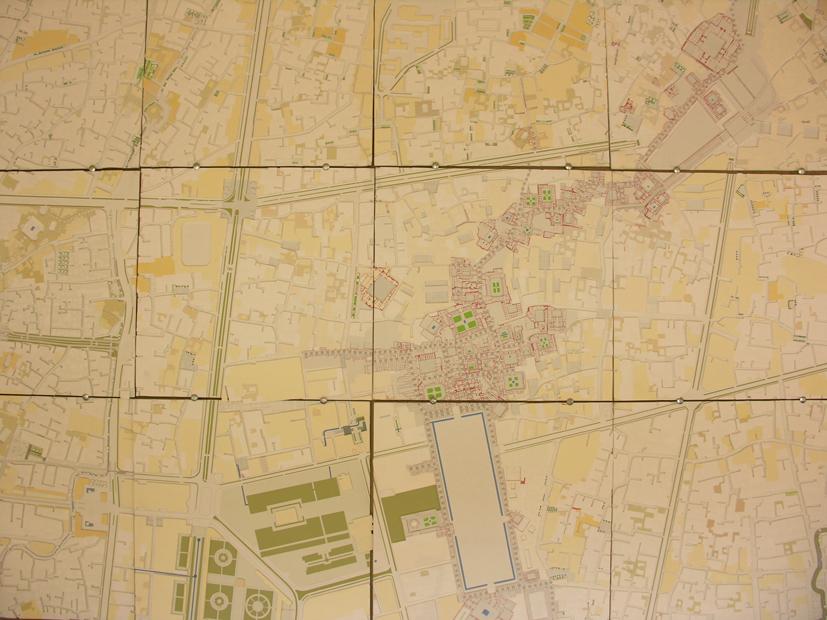The maydan has been as described as “a hinge between the old and the new city”[1], and as “anchor[ing] the new construction”[2]. It acted not only as the everyday scene of commerce and abundance which epitomised Abbas’ imperial success, but also as the stage-set for special religious and festival celebrations. The maydan was included in the very first tranche of building that the Shah ordered, but was significantly modified as the plan developed. In Babaie’s description of what she calls the “masterplan of imperial intentions” within Shah Abbas’ Isfahan[3], the maydan is considered to be “the nucleus of authority for the [whole Safavid] empire”[4]. Babaie suggests that the “massive scale and orderly disposition” of the maydan was designed to “conjure up metaphorically the reconstituted and securely anchored structure of Safavid polity”[5], within the first ever “centralised imperial regime of Twelver Shiism”[6] .
More practically, the maydan was also a place that Europeans could, and did, access – ensuring that their accounts could be first-hand.
[1] Mahvash Alemi, “Princely Safavid Gardens: Stage for Rituals of Imperial Display and Political Legitimacy,” in Middle East Garden Traditions: Unity and Diversity, ed. Michel Conan (Washington: Dumbarton Oaks, 2007), 127.
[2] Sussan Babaie, Isfahan and its Palaces, 66.
[3] Sussan Babaie, Isfahan and its Palaces, 82.
[4] Sussan Babaie, Isfahan and its Palaces, 126.
[5] Sussan Babaie, Isfahan and its Palaces, 89-90.
[6] Sussan Babaie, Isfahan and its Palaces, 66.
